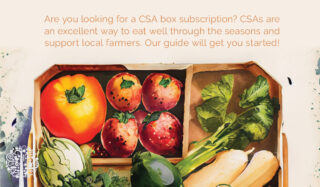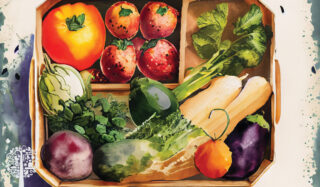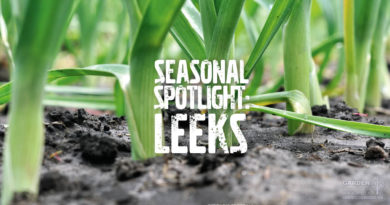Everything You Need To Know About Subscribing To A CSA Box
CSA box subscriptions are a great way to support local growers and provide your family with fresh seasonal produce from spring to fall. Now is the perfect time to start shopping for a CSA because they tend to sell out fast!

What is a CSA subscription?
Before the growing season starts (between December and March), local growers invite the public to invest in their operations through a pre-paid subscription service that guarantees a regular supply of fresh produce throughout the growing season. The grower uses the funds from the subscription to cover the upfront operational costs of growing the produce.
Are there different kinds of subscriptions?
Yes. Many growers will provide small, medium, or large boxes depending on your household size. There’s often flexibility in subscription periods, from an entire growing season of 16-20 weeks to shorter periods of 8-10 weeks during the spring, summer, or fall. Growers will often hold the subscription for you if you are away for a few weeks. Ask about this and if the grower offers a refund policy if the produce delivered isn’t fresh before subscribing.
How much does a subscription cost?
CSA subscriptions often cost less over time than grocery stores, as they cut out the middleman between the farm and your table. A medium-sized box could cost between $15-$25 per week. Shop around, as prices do vary.
Are there payment plans?
Yes. As long as the initial investment covers a percentage of the box subscription, more growers are willing to work with investors on payment.
How is the box delivered?
Some growers will deliver straight to your home on a pre-arranged day of the week, the same way a food service or grocery store would. Others may have designated pick-up places in your area or at the farm gate. Ask for reusable ice packs if the box is delivered to the doorstep. No one wants rotting cabbage sitting by your front door in the hot summer sun.
What’s in a box?
Each box will contain pre-selected produce based on what the grower has in season. A CSA box is not a grocery store, so don’t expect fresh local strawberries in October. Instead, you might receive seasonal berries such as cranberries.
What are the benefits and drawbacks of a CSA?
The best part about a CSA box subscription is knowing where your produce came from and how it’s grown. There are often things in the box that you wouldn’t usually find at the grocery store, such as heirloom purple tomatoes or unusual herbs like borage. A CSA box provides income for the grower and helps in crop planning.
One of the biggest drawbacks is that a CSA box doesn’t provide the investor/customer choice. The box contains pre-selected items chosen by the grower. On the plus side, this might be an excellent opportunity to discover new fruit and veggie varieties!
Where to find a CSA box

In Canada, knowwhereyourfoodcomesfrom.com offers province-by-province listings of growers selling CSA boxes.
CSA Directory – Canadian Organic Growers
Local Love: What Are Good CSA Boxes | Canada’s Own Food
Purchasing from a CSA in Alberta | Alberta Open Farm Days
In the United States, Local Food Directories: Community Supported Agriculture (CSA) Directory | Agricultural Marketing Service lists farms and growers offering CSA subscriptions.
Not all growers selling CSA boxes are on these resources, so shop around and research. Ask at your local farmer’s market or a school farm that offers subscriptions to raise money for ongoing programs.
What’s not to love about supporting local growers and eating fresh seasonal produce?




